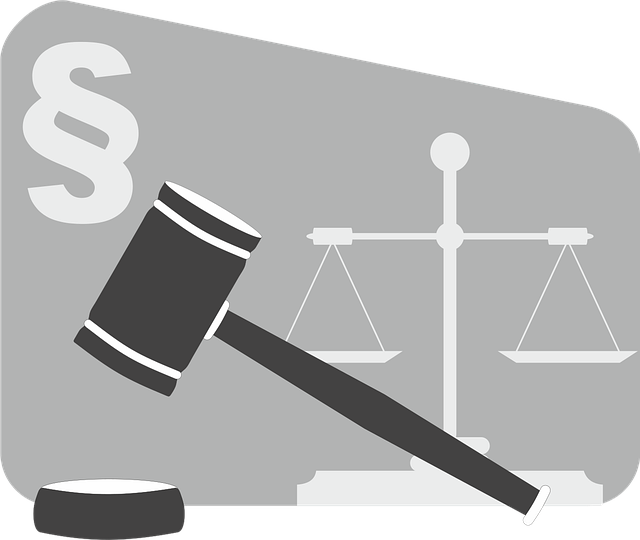Securities class actions provide a legal framework for investors affected by business misconduct or securities law violations to seek collective redress. These actions, crucial in cases of white-collar and economic crimes, offer various forms of compensation, including monetary remedies, restitution, and punitive damages. The process involves multiple stages from filing to resolution, emphasizing justice and accountability. Both plaintiffs and defendants face unique challenges: plaintiffs must present solid claims and navigate complex environments, while defendants focus on robust defenses to protect reputations and minimize penalties. Types of Compensation for Personal Injury are key outcomes in successful cases.
Securities class actions are a powerful tool for investors seeking justice. This legal framework enables collective litigation, where similar investors unite against alleged misconduct. In this article, we explore the intricate world of securities class actions, from understanding the legal basis to navigating the resolution process. We delve into key considerations for plaintiffs and defendants, including types of damages—a crucial aspect, especially when discussing compensation for personal injury in such cases.
- Understanding Securities Class Actions: A Legal Framework
- Types of Damages and Compensation in Class Action Suits
- The Process: From Filing to Resolution
- Key Considerations for Plaintiffs and Defendants
Understanding Securities Class Actions: A Legal Framework

Securities Class Actions provide a legal framework for investors to seek collective redress when their respective businesses have suffered losses due to misconduct or violations of securities laws. These actions are particularly relevant in cases of white collar and economic crimes, where complex schemes may involve numerous affected parties. In such scenarios, class action lawsuits offer a streamlined process to hold accountable the perpetrators and recover damages.
The types of compensation available through securities class actions can encompass various forms, including monetary remedies for financial losses, restitution for harmed investors, and even punitive damages to deter future misconduct. This collective approach ensures that victims of white collar crimes have access to justice and a chance to recover their losses, fostering accountability within the corporate landscape.
Types of Damages and Compensation in Class Action Suits

In securities class actions, individuals who have suffered losses due to corporate misconduct can seek various forms of damages and compensation. The goal is to make up for financial losses, but also to send a strong message to the offending company, deterring future violations. Types of Compensation for Personal Injury principles often apply here, with plaintiffs aiming for both economic and non-economic damages. Economic damages refer to quantifiable losses such as investment decline in value or lost wages. Non-economic damages cover subjective losses like pain and suffering, emotional distress, and loss of quality of life due to the misconduct.
Class action suits can result in several types of compensation for affected parties. These may include monetary awards, injunctive relief mandating corporate policy changes, or even the appointment of independent monitors to oversee compliance. The respective business practices and conduct will determine the appropriate remedies. Unlike a general criminal defense scenario where avoiding indictment is a primary concern, securities class action plaintiffs are focused on achieving justice and redress for their specific economic injuries, while also ensuring accountability and potentially preventing future harm to other investors.
The Process: From Filing to Resolution

The process of a securities class action is complex and involves several stages, from filing to resolution. It begins when investors collectively file a lawsuit against entities responsible for securities fraud or misconduct. This initial step involves careful consideration and gathering of evidence to establish liability and damages. Legal experts specializing in corporate law and financial litigation play a pivotal role here, ensuring the case is strong and aligns with relevant laws and regulations.
Once filed, the case navigates through legal proceedings, including motions, discovery, and negotiations. During this period, both plaintiffs and defendants present their arguments and evidence. If resolution isn’t reached through settlement negotiations, the case may proceed to trial. The outcome can result in various forms of compensation for personal injury, such as monetary damages or injunctive relief, depending on the court’s decision and the specific circumstances of the case. This process aims to hold accountable those who have engaged in fraudulent activities and provide justice and redress to aggrieved investors, often involving both corporate and individual clients in the pursuit of a general criminal defense strategy.
Key Considerations for Plaintiffs and Defendants

In securities class actions, both plaintiffs and defendants face unique challenges. For plaintiffs seeking Types of Compensation for Personal Injury, key considerations include ensuring their claims are well-supported by evidence and legal precedent. Navigating the complex financial and regulatory landscape is crucial, as is understanding the potential outcomes at each stage of the investigative and enforcement process. Effective representation requires a deep dive into the specifics of the case, encompassing financial losses, reputational damage, and emotional distress.
Defendants, on the other hand, must focus on building robust defenses that address the merits of the allegations. This involves meticulous record-keeping and communication with legal counsel to develop strategies that protect their reputations and financial interests within the philanthropic and political communities. For his clients, a skilled defense attorney will employ tactics ranging from early settlement negotiations to challenging the admissibility of evidence, aiming to mitigate liability and minimize potential penalties.
Securities class actions play a crucial role in holding companies accountable for misconduct, offering a powerful mechanism for justice. By understanding the legal framework, evaluating various damages, navigating the case process, and considering key aspects for both plaintiffs and defendants, individuals can better comprehend their rights and potential outcomes. Moreover, being aware of the available types of compensation for personal injury within these suits empowers investors to seek fair redress for their losses.






